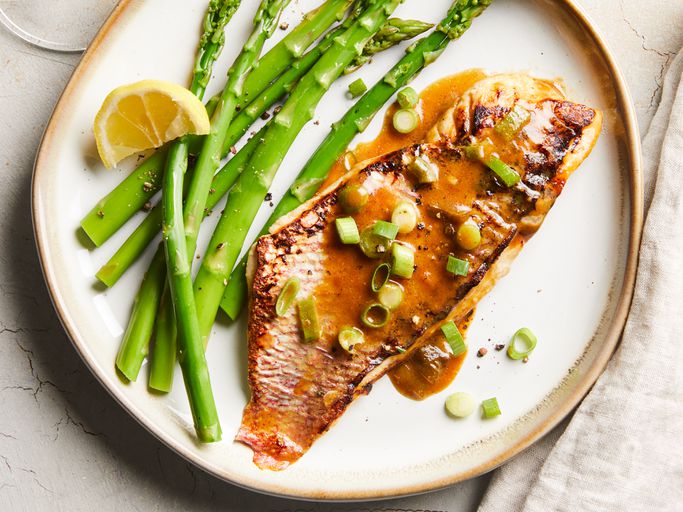Background and History:
Pan-seared red snapper is a delightful seafood dish that highlights the mild, sweet flavor of red snapper. The dish has its roots in coastal regions where fresh seafood is abundant. It’s a popular choice in many seafood restaurants, appreciated for its simplicity and flavor.
Ingredients:
- 4 red snapper fillets (6-8 oz each)
- Salt and black pepper to taste
- 2 tablespoons olive oil
- 2 tablespoons unsalted butter
- 2 cloves garlic, minced
- 1 lemon, thinly sliced
- 2 tablespoons fresh parsley, chopped
- Lemon wedges for garnish
Instructions:
- Preparation: Pat dry the red snapper fillets with paper towels and season both sides with salt and pepper.
- Heat the Pan: In a large, heavy skillet, heat the olive oil over medium-high heat. The pan should be hot but not smoking.
- Sear the Fillets: Carefully place the red snapper fillets into the pan, skin side down. Let them cook for 3-4 minutes, allowing the skin to become crispy.
- Flip and Cook: Gently flip the fillets and cook for an additional 2-3 minutes or until the fish is opaque and flakes easily with a fork.
- Add Flavor: In the last minute of cooking, add the minced garlic and lemon slices to the pan. Stir in the butter and let it melt, creating a flavorful sauce.
- Garnish and Serve: Sprinkle fresh parsley over the red snapper fillets, garnish with lemon wedges, and serve immediately.
Nutrition Facts:
- Red snapper is a lean source of protein and provides essential nutrients such as vitamin D and selenium.
- A 6-ounce serving of red snapper has approximately 200 calories, 40g of protein, and 1g of saturated fat.
Notes:
- Red snapper can be replaced with other white fish like sea bass or grouper.
- Adjust the cooking time based on the thickness of your fish fillets. Thicker fillets may require a bit more time.
Allergy Warning:
- Ensure that there are no allergies to fish or seafood among the diners.
- Be cautious with cross-contamination when handling seafood to prevent allergic reactions.
- Best Dun & Bradstreet (DNB) Alternatives for 2025 - April 24, 2025
- Best Seamless.ai Alternatives for 2025 - April 22, 2025
- Best Coldlytics Alternatives for 2025 - April 22, 2025














